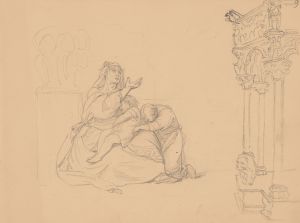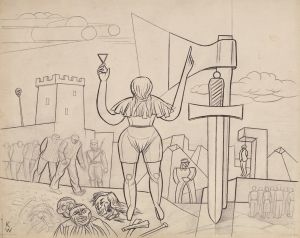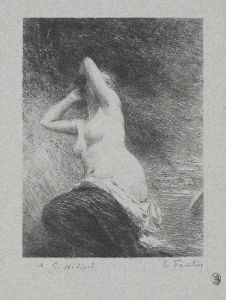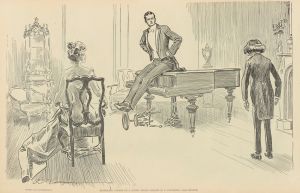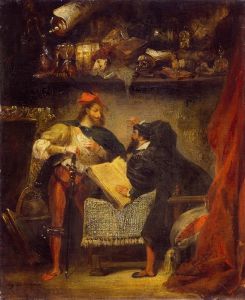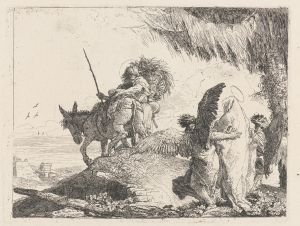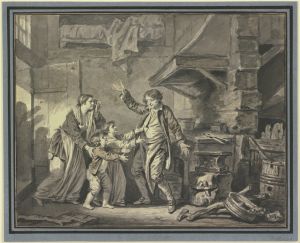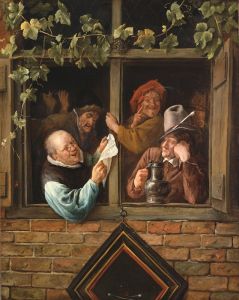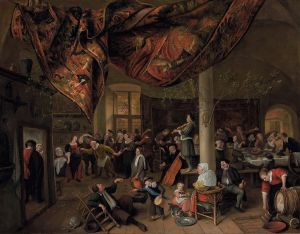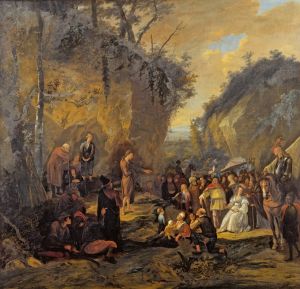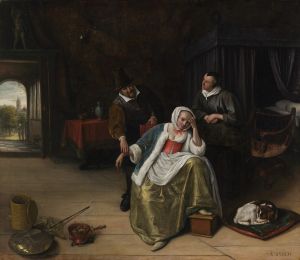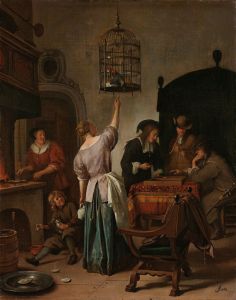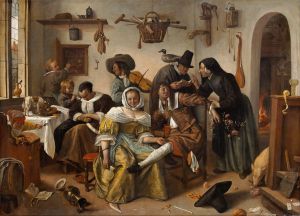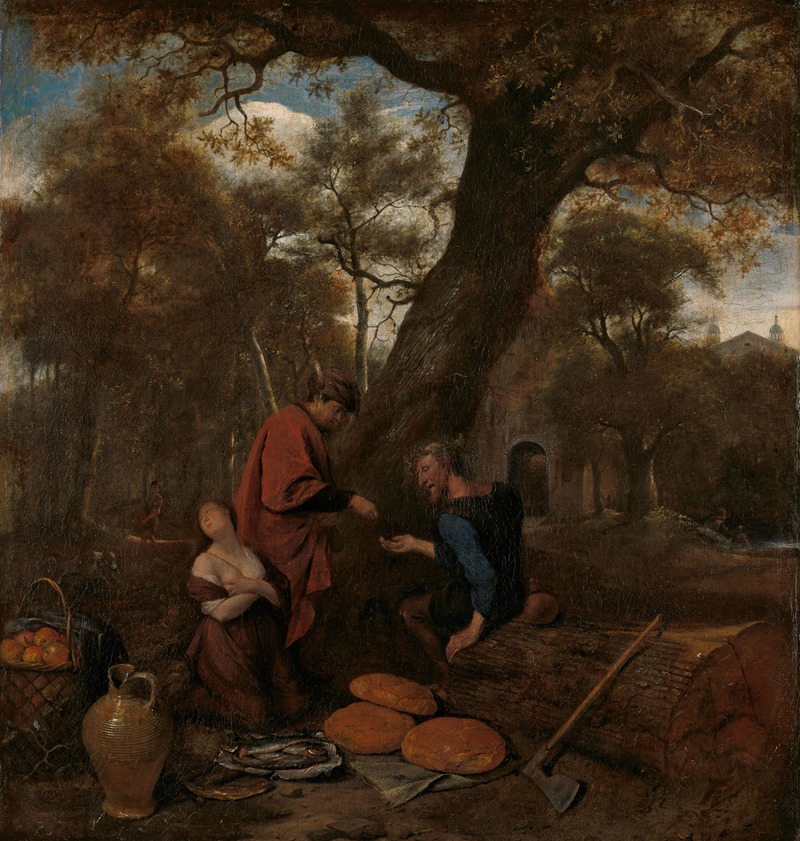
Erysichthon selling his daughter
A hand-painted replica of Jan Steen’s masterpiece Erysichthon selling his daughter, meticulously crafted by professional artists to capture the true essence of the original. Each piece is created with museum-quality canvas and rare mineral pigments, carefully painted by experienced artists with delicate brushstrokes and rich, layered colors to perfectly recreate the texture of the original artwork. Unlike machine-printed reproductions, this hand-painted version brings the painting to life, infused with the artist’s emotions and skill in every stroke. Whether for personal collection or home decoration, it instantly elevates the artistic atmosphere of any space.
Jan Steen was a Dutch Golden Age painter known for his lively and often humorous depictions of everyday life. One of his lesser-known works is "Erysichthon Selling His Daughter," which draws upon a story from Greek mythology. This painting is an example of how Steen incorporated classical themes into his oeuvre, which primarily consisted of genre scenes.
The myth of Erysichthon comes from Ovid's "Metamorphoses." Erysichthon was a Thessalian king who was punished by the goddess Demeter for cutting down a sacred grove. As a result, he was cursed with insatiable hunger. In his desperation to satisfy his endless appetite, Erysichthon squandered all his wealth. Eventually, he resorted to selling his daughter, Mestra, into slavery to obtain food. Mestra, however, possessed the ability to change her shape, a gift from the god Poseidon. This allowed her to escape her captors repeatedly, returning to her father, only to be sold again.
Steen's painting captures a moment from this mythological narrative. Although the exact composition of the painting is not widely documented, Steen's style suggests that he likely infused the scene with his characteristic humor and attention to detail. His works often include expressive figures, dynamic compositions, and a rich use of color, all of which contribute to the storytelling aspect of his paintings.
Jan Steen was known for embedding moral lessons within his works, often through the depiction of vice and folly. In "Erysichthon Selling His Daughter," the moral could be interpreted as a cautionary tale about greed and the consequences of disrespecting the divine. Steen's ability to convey such themes through engaging and accessible imagery made his works popular during his lifetime and beyond.
The painting reflects Steen's interest in human behavior and his skill in portraying complex narratives. While Steen is primarily celebrated for his genre scenes depicting Dutch domestic life, his foray into mythological subjects demonstrates his versatility as an artist. This work, like many of Steen's paintings, would have been intended for a knowledgeable audience familiar with classical literature and the moral lessons such stories imparted.
Jan Steen's contribution to Dutch art is significant, as he was part of a movement that emphasized realism and the depiction of everyday life. His works are characterized by their lively compositions and the ability to capture the essence of human nature. "Erysichthon Selling His Daughter" is a testament to Steen's narrative skill and his ability to adapt classical themes to his unique artistic vision.
While this painting may not be as widely recognized as some of Steen's other works, it remains an important part of his artistic legacy, illustrating his engagement with classical mythology and his ability to convey complex stories through the medium of paint.





